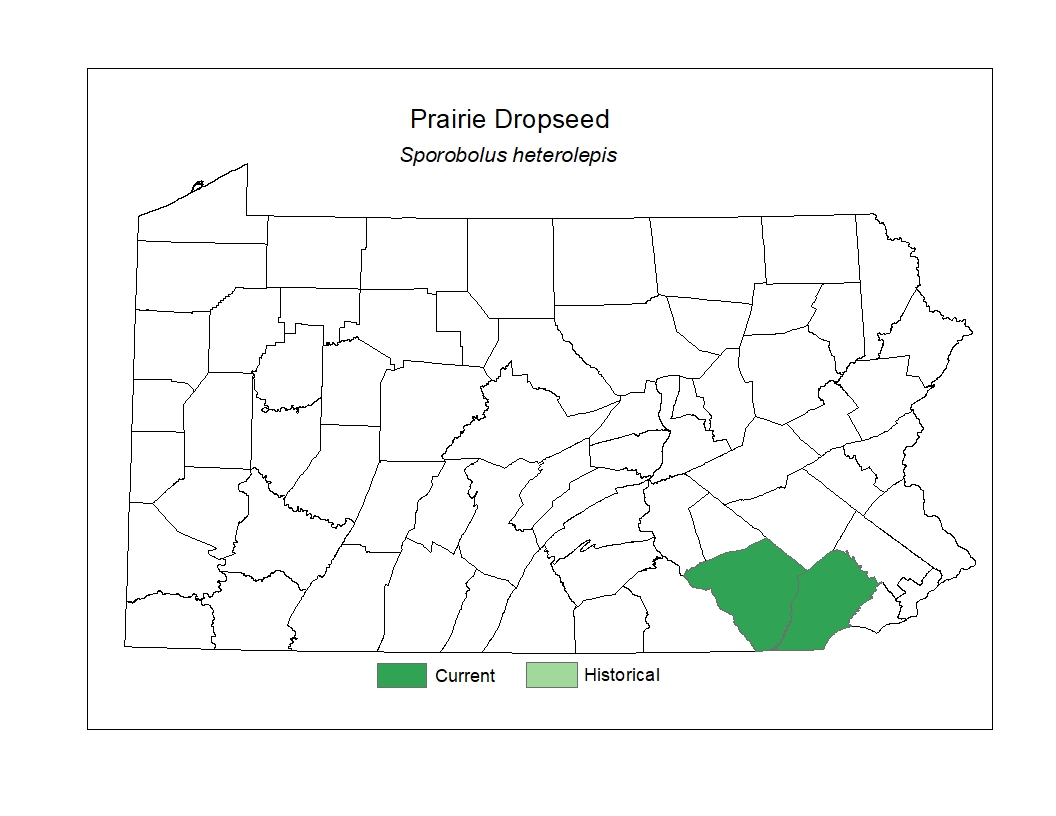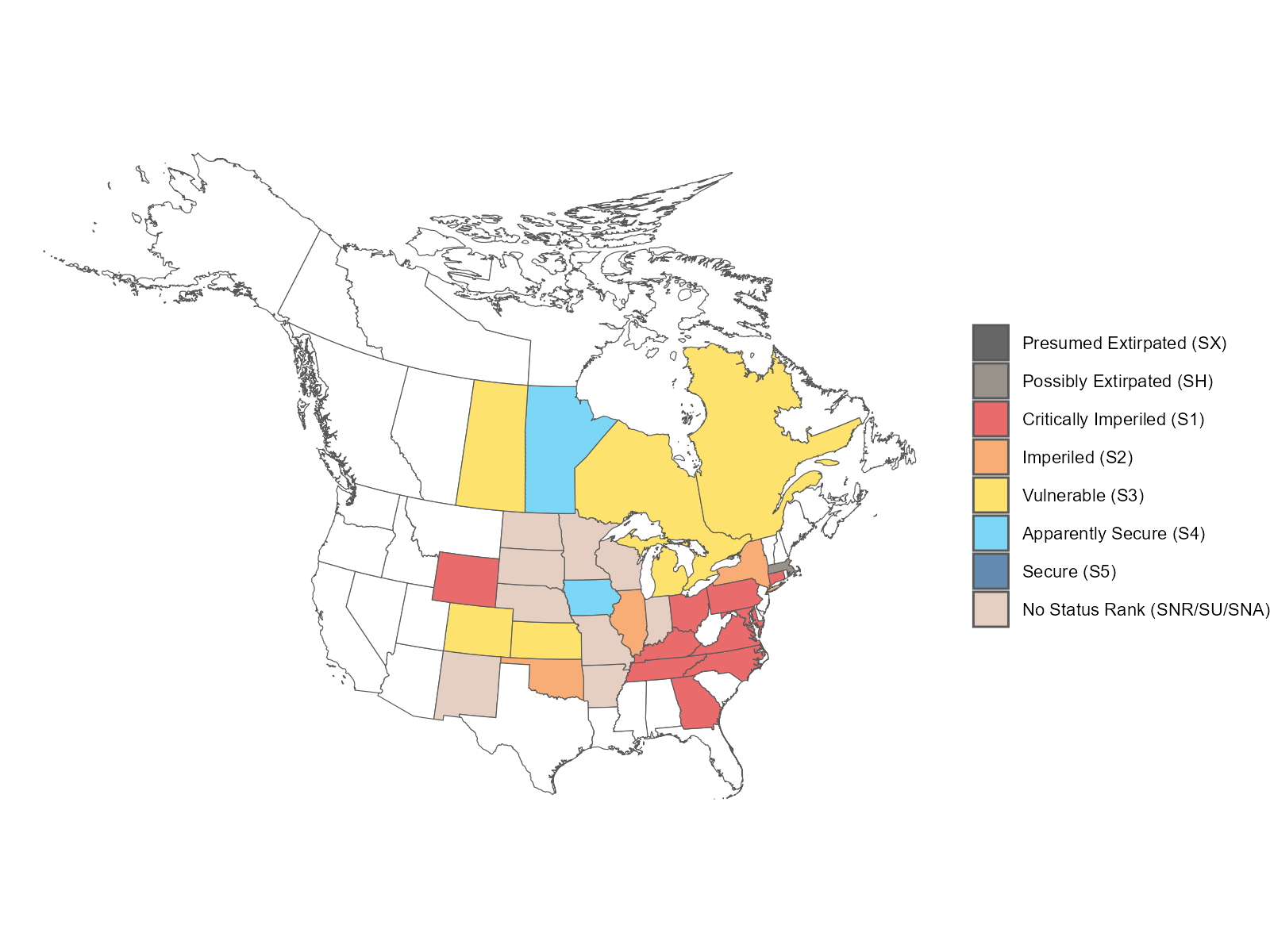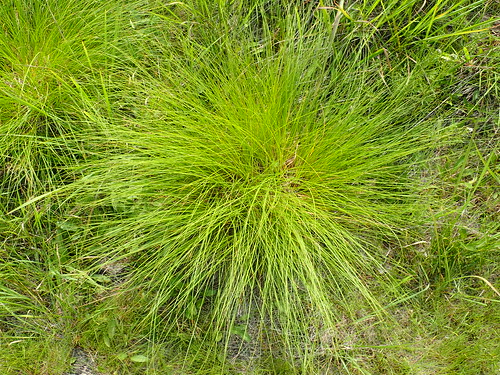 Species Factsheets
Species Factsheets
Sporobolus heterolepis
Prairie Dropseed
State Status: Pennsylvania Endangered (PE)
PBS Status: Pennsylvania Endangered (PE)
Federal Status:
Global Rank: G5
![]() rank interpretation
rank interpretation
State Rank: S1
Did You Know?
This is a true prairie grass and because of the dense tufts of the narrow leaves of this species there isn't much of anything else that closely resembles it.
Description
Prairie dropseed (Sporobolus heterolepis) is a perennial grass that grows in dense clumps that produces many fine, drooping leaves. Its flowering stems usually reach four to ten decimeters in height. The leaves are 12-35cm long and up to 2.5mm wide. The blades usually have in-rolled edges and are slightly rough to the touch. The flowers can be found singly in small spikelets. The spikelets are reddish to lead-colored and are held in long, narrowly pyramidal, branched clusters. Heterolepis means “different scales” and refers to the two scales, or glumes, at the base of each spikelet that are unequal in length.
Rank Justification
Critically imperiled in the nation or state because of extreme rarity (often 5 or fewer occurrences) or because of some factor(s) such as very steep declines making it especially vulnerable to extirpation from the state.
Habitat
Serpentine barrens.
Survey Dates
Flowers August - September
Distribution
In Pennsylvania, it can be found growing in serpentine barrens from Lancaster and Chester Counties.

Threats
This species thrives in serpentine barrens, which is a globally rare plant community that is well represented in southeastern Pennsylvania. Land conversion for development, dumping, and fragmentation have degraded the quality of some these rare habitats. In addition, the open nature of the habitats required by prairie dropseed is in some cases threatened by the encroachment of woody or invasive plants.
Management
Maintenance of known populations and preservation of the rare communities, such as serpentine barrens, where plain ragwort grows will be crucial to its survival. Removal of overgrowth and invasive species with the integration of fire regimes, when appropriate, will help to preserve the integrity of the sites. The management of the known sites requires long term monitoring of populations. Potential sites for restoration should be evaluated.
Conservation Status Map

NatureServe. 2017. NatureServe Explorer: An online encyclopedia of life [web application]. Version 7.1. NatureServe, Arlington, Virginia. Available https://explorer.natureserve.org.
https://www.illinoiswildflowers.info/grasses/plants/pr_dropseed.htm
- NatureServe. 2018. NatureServe Explorer: An online encyclopedia of life [web application]. Version 7.1. NatureServe, Arlington, Virginia. Available at https://www.natureserve.org/explorer
- Pennsylvania Natural Heritage Program. 2018.
- Rhoads, A.F. and W.M. Klein, Jr. 1993. The Vascular Flora of Pennsylvania. American Philosophical Society, Philadelphia, Pennsylvania. Rhoads, A.F. and T.A. Block.
- 2007. The Plants of Pennsylvania: An Illustrated Manual. 2nd edition. University of Pennsylvania Press, Philadelphia, Pennsylvania.







